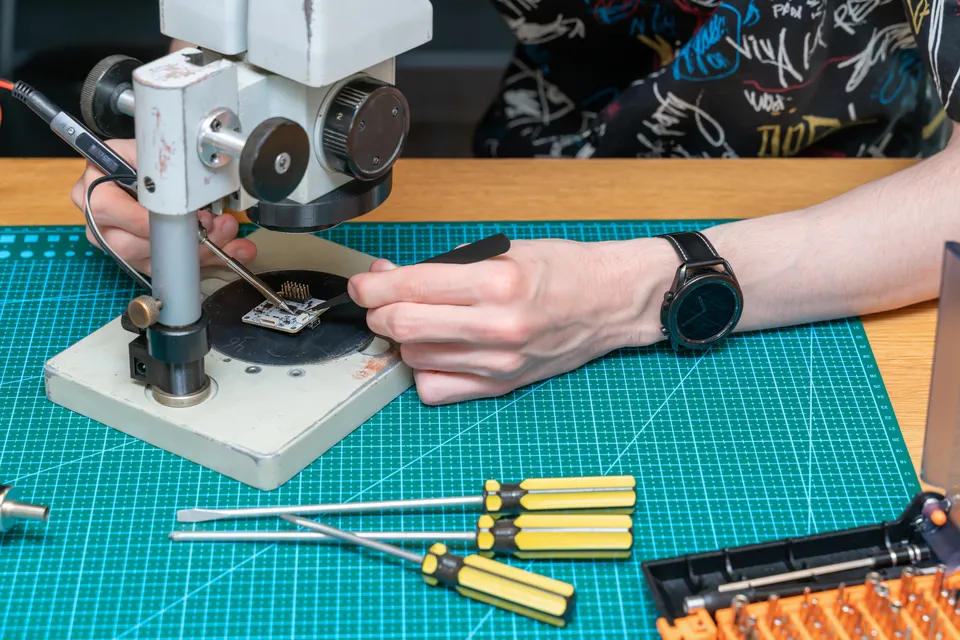Smartphone micro-soldering is a specialized practice used to repair small electronic components inside smartphones. This technique requires precision equipment and technical expertise to carry out repairs at the microscopic level. Here’s an overview of smartphone micro soldering, including its applications, challenges and benefits.
Smartphone Micro Soldering applications :
Smartphone micro soldering is used to repair a variety of common problems encountered by smartphone users, including:
1. Repairing load connectors :
Smartphone charging connectors are often subject to heavy wear and tear due to repeated insertion of the charging cable. Microsoldering is used to replace or repair damaged charging connectors to restore the phone’s charging capacity.
2. Repairing audio ports and buttons :
Audio ports and physical buttons on smartphones can also be subject to damage from prolonged use. Micro-soldering is used to replace faulty audio ports or repair buttons that no longer work properly.
3. Data retrieval :
In the event of failure of a smartphone’s internal storage, micro-soldering can be used to access and retrieve data stored on the storage chip. This can be useful in the event of phone failure or critical data loss.
4. Repair of electronic components :
Smartphones contain many small electronic components, such as IC chips, resistors, capacitors, etc., which can be damaged by a variety of factors, including drops, water, or physical damage. Micro-soldering is used to repair or replace these defective components.
Smartphone Micro Soldering Challenges :
Smartphone micro-soldering presents some unique challenges due to the size of the electronic components and the complexity of the integrated circuits. Some of these challenges include:
1. Component size :
The electronic components inside smartphones are extremely small, making them difficult to handle and solder, even with precision equipment.
2. Limited accessibility :
The electronic components inside smartphones are often located in tight, hard-to-reach spaces, making them even more difficult to handle and repair.
3. Circuit complexity :
Smartphones contain complex integrated circuits with numerous interdependent connections. Micro soldering requires a thorough understanding of circuit design and wiring diagrams to make accurate repairs.
4. Risk of further damage :
Due to the size and complexity of the components, there is an increased risk of causing further damage when micro-soldering smartphones, including short circuits or damage to adjacent circuits.
Advantages of Smartphone Micro Soldering :
Despite the challenges, smartphone micro soldering offers several advantages, including:
1. Economic repair :
Micro-soldering enables individual components inside the smartphone to be repaired, which can be more economical than replacing the whole device.
2. Data recovery :
In the event of phone failure, the micro-solder can be used to recover data stored on the device, which can be crucial for users who have important data on their phone.
3. Maintaining sustainability :
By repairing faulty electronic components inside the smartphone, micro-soldering can extend the useful life of the device and reduce electronic waste.
In conclusion, smartphone micro-soldering is a specialized technique used to repair small electronic components inside smartphones. While it presents unique challenges due to the size and complexity of the components, it also offers significant benefits in terms of cost-effective repair, data recovery and extended device service life.

